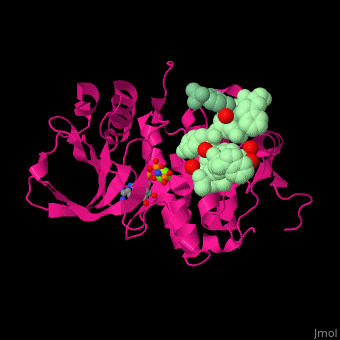Function
Ephrin receptors (EPHR) are components of the cell signaling pathways. They belong to the receptor tyrosine kinases. The extracellular ligand-binding domain (LBD) interacts with ephrin[1].
- Ephrin receptor A2 functions in entry of Epstein-Barr virus to epithelial cells[2].
- Ephrin receptor A4 functions in entry of Kaposi's sarcoma-associated herpesvirus to cells[3].
- Ephrin receptor A5 is expressed in the nervous system and plays a role in synaptogenesis[4].
- Ephrin receptor A7 functions in corticogenesis[5].
- Ephrin receptor A8 has a role in short-range contact-mediated axonal guidance.
- Ephrin receptor B4 determine the molecular distinction between veins and arteries in the early embryo[6].
- Ephrin receptor B6 functions in cold immune microenvironment and promotes the immune escape in BLCA[7].
For more details see Ephrin Type-A Receptor and Kinase-linked, enzyme-linked and related receptors.
.
Relevance
EPHR and ephrins can act as both tumor suppressors and tumor enhancers depending on the context[8].
Structural highlights
EPHR domains include an ectodomain (residues 23-435) containing the LBD (residues 23-326), a second fibronectin III domain (fn3) (residues 446-539), a transmembrane domain (residues 539-563), a kinase domain (residues 596-900) and a sterile-α-motif (SAM) domain (residues 908-972).
. Water molecules are shown as red spheres.
.
(3fxx).[9]
3D Structures of ephrin receptor
Ephrin receptor 3D structures

